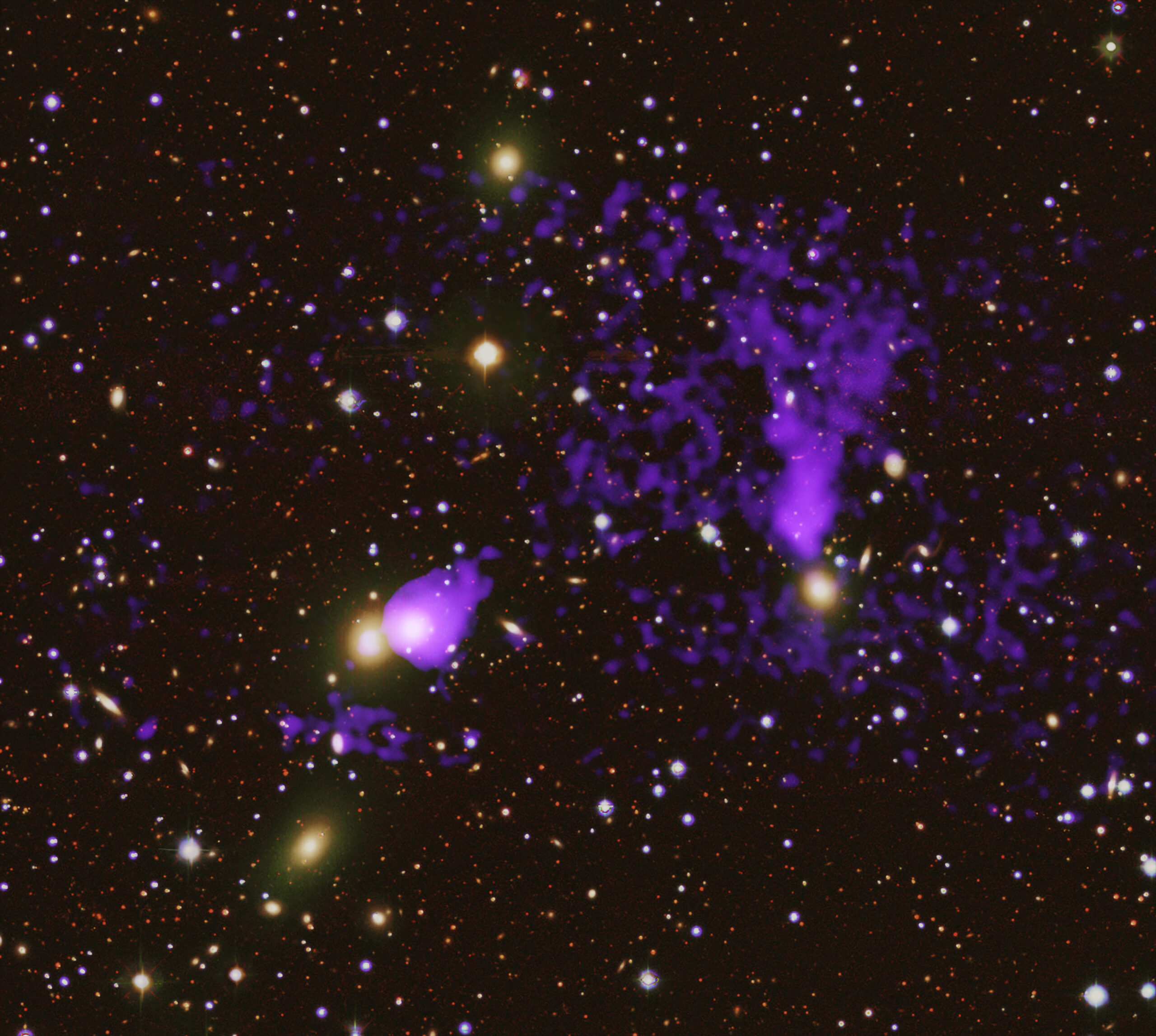In the aftermath of hurricane winds and rains, under clear conditions in Cape Canaveral, a SpaceX Falcon Heavy rocket blasted into the sky carrying NASA’s newest interplanetary spacecraft: Europa Clipper. Designed to determine whether Jupiter’s fourth-largest moon is habitable, the spacecraft is equipped with a suite of cameras and scientific instruments to investigate the structure and composition of Europa, including its subsurface ocean where life may exist today.
“Europa is of such interest because it is this ocean world, and water of course ignites the thought of possible life,” says Tracy Beckera planetary scientist with the Southwest Research Institute in San Antonio, Texas.
The ocean on Europa lies beneath an icy crust about 10 to 20 miles thick, and scientists believe it contains more than twice as much liquid water as Earth’s oceans combined. The moon likely has a rocky core, and if there is volcanic activity on the Europan seafloor, like there is on Earth, then key molecules for life may seep into the ocean.
Europa Clipper is not designed to detect life itself, and the mission is unlikely to find direct evidence of living organisms. But by studying the moon’s chemical composition, geologic activity, gravity, magnetism and other properties, Clipper should be able to determine whether Europa has the right conditions to support life.
“The mission’s goals are just to assess the habitability,” Becker says. “It’s the first step in that sort of long-term discovery of: Are we alone in the in the solar system? Or in the universe?”
A new Jovian explorer
The SpaceX Falcon heavy rocket with the Europa Clipper spacecraft launches at NASA’s Kennedy Space Center in Florida. NASA/https://tf-cmsv2-smithsonianmag-media.s3.amazonaws.com/filer_public/9c/c1/9cc1ee0d-81b3-4587-b4e7-aa99626bae7b/1_europaclipperlaunch.jpg)
Europa Clipper is the largest spacecraft that NASA has ever launched to another planet, with a main body that is about the size of an SUV and solar panels that will unfurl to a wingspan of more than 100 feet, longer than a basketball court. The spacecraft’s electronics are housed in an aluminum-zinc vault to shield them from Jupiter’s harsh radiation.
Clipper will first fly to Mars to slingshot around the planet and pick up speed in early 2025. Then it will circle back to Earth in late 2026 for another velocity-boosting gravity assist before hurtling on its way to Jupiter, where it is scheduled to arrive in April 2030.
After entering orbit around Jupiter, the spacecraft will conduct 49 close flybys of Europa over the course of a four-year primary mission. With each pass, Clipper will assess the conditions on Europa, flying as low as 16 miles above the surface.
“We’re going to see things that we’ve never seen before,” says Lynnae Quicka planetary scientist at NASA’s Goddard Space Flight Center.
Clipper will identify the most promising areas to search for life—such as near cryovolcanic domes that erupt with briny slush, or near “chaos terrain,” where icy chunks of the surface have collapsed, and water could ooze upward through the fractured landscape.
The spacecraft may even spot active geysers spewing icy material from the moon’s interior out into space. These plumes have been tentatively detected by the Hubble Space Telescope and in data from the Galileo spacecraft, which orbited Jupiter from December 1995 to September 2003.
With a little luck, Clipper may be able to fly through a plume and directly sample material from Europa’s ocean. “If [the plumes] are there, there’s a very high chance we’ll detect them,” Quick says.
Meteorite impacts also eject material from Europa into space, and two instruments, a mass spectrometer and a dust analyzer, will collect gas particles and dust and ice grains released by Europa to search for organic compounds. These complex molecules containing carbon could provide nutrients for life or even be materials produced by organisms.
Jupiter’s icy pearl
Images collected during the Galileo mission show Europa’s approximate natural colors (left) and differences in its predominantly water-ice crust thanks to enhanced colors (right). Dark brown areas represent rocky material while blue portions represent plains of ice. NASA / JPL / DLR/https://tf-cmsv2-smithsonianmag-media.s3.amazonaws.com/filer_public/b4/71/b4719464-cdf6-43c8-bc1a-188d7f58bb52/2_pia01295_modest.jpg)
Europa was discovered in 1610 by Galileo Galilei along with Jupiter’s three other large moons: Ganymede, Callisto and Io. Roughly the size of our own moon, Europa is the smallest of the four Galilean satellites and the second closest to Jupiter. It orbits at the ideal distance for Jupiter’s gravity to heat the moon enough to maintain liquid water under an icy shell—but not so close that it becomes a scorched lava world like Io.
In the 1950s and 60s, astronomers using ground-based telescopes found that Europa’s high reflectivity, or albedo, suggested its surface was covered in water ice. The Jupiter system was first visited by the spacecraft Pioneer 10 and Pioneer 11 in the early 1970s, and then by Voyager 1 and Voyager 2 in 1979. Images from Voyager 2 revealed the moon’s surface was crisscrossed with dark cracks or ridges spanning more than a thousand miles called linea, Latin for “lines” or “threads.”
“They’re sort of this brownish, reddish color, and we think those could be regions where the ice is separating the way plate tectonics happens on Earth,” Becker says. “So the ice kind of separates out, the ocean underneath is able to reach the surface and then refreeze.” The dark color is believed to come from salts in the ocean that are broken down on the surface by Jupiter’s radiation.
In the 1990s, the Galileo spacecraft became the first spacecraft to orbit Jupiter, making its closest pass to Europa in December 1997 when it flew within 124 miles. The spacecraft found dark circular features on the surface that scientists call lenticulaeLatin for “freckles.” These ruddy spots, some of which are likely cryovolcanoes that erupt frosty sludge, suggest Europa’s ice shell is churning as cold material sinks and warmer pockets rise to the surface.
The Galileo spacecraft also observed a dearth of impact crafters on Europa. “We noticed that the moon has very few craters relative to the other satellites in the Jupiter system,” Becker says. “If it has the geological capability of resurfacing the way the Earth does, with oceans and plate tectonics and such, it could erase that history of craters.”
Lenticulae, or “freckles,” decorate Europa. ASA / JPL / University of Arizona / University of Colorado/https://tf-cmsv2-smithsonianmag-media.s3.amazonaws.com/filer_public/ea/5f/ea5f090c-e95c-4087-a8ce-6f0f3a2ee08d/3_ruddy-freckles-on-europa.webp)
But the most remarkable discovery came from Galileo’s magnetometer, which found that a conductive layer in Europa was generating a local magnetic field as the moon passed through Jupiter’s magnetosphere—something that could most readily be explained by the presence of a briny, subterranean ocean.
“Motion of a conductor through a magnetic field creates another magnetic field in response—that’s why your keys go off in the metal detector at the airport,” says Robert Pappalardothe project scientist for Europa Clipper at NASA’s Jet Propulsion Laboratory. “In the extended mission of Galileo, we set up a flyby that could test this at Europa and show that, yeah, the signs of an ocean from this magnetic field are there.”
The data from Galileo has provided our best picture yet of Europa’s frozen landscape and liquid interior—but Clipper is en route to change that.
A world of ice and brine
While scientists are confident that Europa harbors a subsurface ocean, several questions remain about the tantalizing moon. How thick is the ice shell? How active is the seafloor? Where does slushy brine erupt onto the surface, and where do irradiated ice chunks sink into the depths? The answers to these questions are critical to understanding whether the moon could support life.
“When we look for conditions for life, of course we look for liquid water, we look for energy, and we look for organic chemistry,” Quick says. “Because these bodies are icy, it’s really these geological processes, whether we’re talking about tectonics, whether we’re talking about cryovolcanism … that stir the pot, so to speak.”
An artist’s concept of Europa depicts an outer shell of ice with plumes and a subsurface ocean with vents on its floor. NASA / JPL-Caltech/https://tf-cmsv2-smithsonianmag-media.s3.amazonaws.com/filer_public/d7/d1/d7d162ab-d138-49d2-b62e-3f32ef2853f4/4_europas-mysterious-interior-artists-concept.webp)
To investigate this mixing, Clipper is equipped with spectrometers to map Europa’s surface composition, a thermal camera to search for hot spots of activity, instruments to measure the moon’s magnetic field and gravity—both of which can reveal details about the thickness of the ice shell and depth of the ocean—and a radar to search for reservoirs of water trapped in the icy crust.
“We’re going to use these instruments together to get at Europa,” Pappalardo says.
If Clipper finds that Europa could in fact support life, then it will fall to a future mission to make the journey to the surface.
“The next step in Europa exploration would be to go to a place that Europa Clipper identifies as high priority … where those ingredients for life may be stirring today, in an oasis, if you like,” Pappalardo says. “We would presumably land in a region like that and scoop down below the top layer that has been contaminated by radiation … right there on the surface to literally look for signs of life.”
Should such a mission discover life—microbes clinging to a volcanic vent on the seafloor, for example, perhaps even feeding an ecosystem of alien deep-sea critters—the implications for science, as well as the entire human experience, cannot be overstated.
“If we were to find another example of life in our solar system at Europa, it would almost certainly be an independent origin,” Pappalardo says. “Then, life must be common everywhere.”






